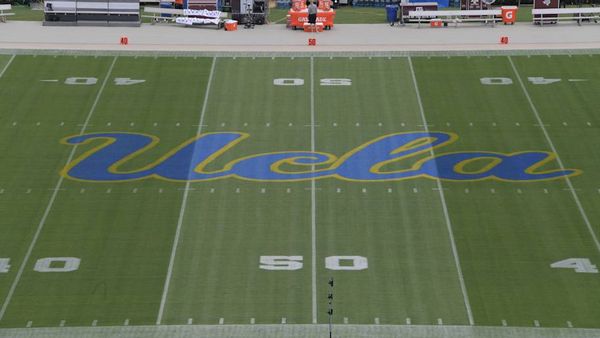
The Super Bowl is a special thing. It’s way more than simply a football game. The Super Bowl brings together diehard pigskin fans as well as casual observers who came for the food and halftime show.
In fact, it can be easy to forget about the game itself, with all the spectacle surrounding it. However, the Super Bowl is the single most important matchup of each season.
Winning it guarantees that a franchise and its players and coaches will be etched into the annals of history. In front of the world one team will declare its superiority over the rest of the league.
So to say that it’s important would be an understatement.
As such, the NFL assigns the referees to the game judiciously. The last thing the league wants is any sort of controversy in the Super Bowl.
The Role of Super Bowl Referees
Just like in any game, the role of the officiating crew is to correctly and consistently call the game. There are seven on-field officials during NFL games, each with a different position. They are: Referee, Umpire, Down Judge, Line Judge, Field Judge, Side Judge and Back Judge. The eighth member of the crew is the replay official.
Courtesy of the NFL Operations official website, here’s a breakdown of each position.
Referee: Stands in the offensive backfield, 15 yards deep on the right side of the formation. They wear a white cap and are the leader of the officiating crew. They oversee everything related to the officials and the pace of the game. This individual communicates all foul calls and determines if a measurement is necessary.
Umpire: Stands in the offensive backfield, 15 yards deep opposite of the referee. This individual is responsible for checking player equipment, marking penalty yardage, digging through the pile on fumbles and directly engaging with players on both teams.
Down Judge: Stands on the opposite sideline from the line judge, looking directly down the line of scrimmage. They oversee the line of scrimmage, direct the chain crew, watch for offside and encroachment. They also inform the referee of the current down.
Line Judge: Stands on the opposite sideline from the down judge, looking directly down the line of scrimmage. This individual counts offensive players on the field and rules on plays near the sideline on their side of the field.
Field Judge: Stands in the defensive backfield, 20 yards behind the line of scrimmage on the same side as the Line Judge. They watch the closest receiver and defensive back for potential penalties and count the defensive players on the field.
Side Judge: Stands in the defensive backfield, 25 yards from the line of scrimmage on the same side as the Down Judge. They are the primary timekeeper in the event of a clock malfunction, watch the closest receiver and defensive back for potential penalties, count the defensive players on the field, watch the sideline to determine if a player stepped out of bounds and signal the end of each quarter.
Back Judge: Stands in the defensive backfield, 30 yards downfield between the hash marks. They count defensive players on the field and keep track of game clock while managing television breaks.
NFL Referee Salaries
NFL officials can earn nearly $300,000 per year. While the official numbers are not provided by the NFL, the now-expired collective bargaining agreement the league was using allows us to get a general sense of compensation.
The average NFL referee is likely making around $205,000, which works out to be approximately $12,000 per game.
Salaries vary based on experience. For example, it has been reported that Brad Allen (in his ninth season) and Craig Wrolstad (in his 22nd) are both making closer to $250,000.
How Much Do NFL Referees Make For Working The Super Bowl?
Again, the NFL has not made any of this public information, but reports suggest that officials receive a bonus of about $4,000 for each postseason game they work.
But the Super Bowl is an entirely different animal. Referees selected to work Super Bowl Sunday get a bonus of $30,000 to $50,000.
Are NFL Referees Full-Time Employees?
The NFL has recently explored the possibility of making about one-fifth of its referees full-time league employees. But at the time of this writing, NFL referees are not.
They do get a 401(k) but no other benefits.
Some in the league feel that making the referees full-time employees would improve the quality of the officiating. One such person is New York Jets quarterback Aaron Rodgers.
Rodgers appeared on the “Pat McAfee Show” in October 2023 and said this (transcript courtesy of CBS Sports):
“I do think that it would probably help to have all of them full time,” Rodgers told McAfee. “I think an increase in pay probably as well. It’s a really important part of our game. We’re a billion-dollar industry. I think those men and women deserve to be paid appropriately where they can make this their full-time gig.”
Read more about the Super Bowl
This article was originally published on www.si.com as How Much Do Super Bowl Referees Make?.







